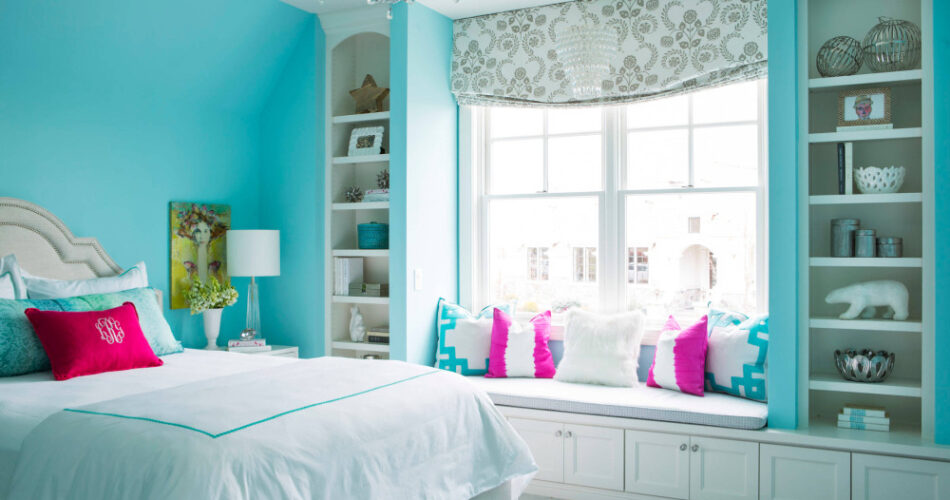Imagine a canvas, vast and vague, yearning for a touch of magic. Now, introduce the mesmerizing hue of turquoise—a color that whispers of serene oceans and sun-dappled afternoons.
It’s a pigment that demands companions worthy of its vibrancy, and the quest to find the perfect color harmony is both exhilarating and nuanced.
In the tapestry of design, pairing colors that go with turquoise can elevate the mundane to the sublime. Every shade communicates; the right ones resonate.
Within these lines, you’ll unlock a chromatic symphony, as we delve into aesthetic color matching and visual color balance that accent turquoise in a dance of chromatic symphony.
This article aims to infuse your spaces with the lush vitality of turquoise, exploring complementary colors, monochromatic color schemes, and the subtle whispers of analogous colors.
By journey’s end, you’ll wield the secrets of colors that amplify turquoise’s allure, transforming spaces into sanctuaries of style.
Colors That Go With Turquoise
| Color That Goes With Turquoise | Visual Contrast | Mood/Energy | Ideal Use | Complementary Industries |
|---|---|---|---|---|
| White | High contrast, brightens turquoise | Clean, spacious, serene | Accent walls, trim, linens | Home decor, Fashion, Weddings |
| Coral | Moderate contrast, vibrant | Energetic, playful, warm | Accessories, art, textiles | Beauty, Fashion, Interior design |
| Gold | Low contrast, luxurious | Rich, sophisticated, glamorous | Hardware, lighting, accents | Jewelry, Event planning, Luxe interiors |
| Navy Blue | Low contrast, harmonious | Elegant, grounded, professional | Furniture, corporate branding | Apparel, Corporate design, Nautical themes |
| Charcoal Gray | Medium contrast, modern | Neutral, balanced, versatile | Flooring, furniture, exteriors | Architecture, Automotive, Tech industries |
The Gold Turquoise Combination
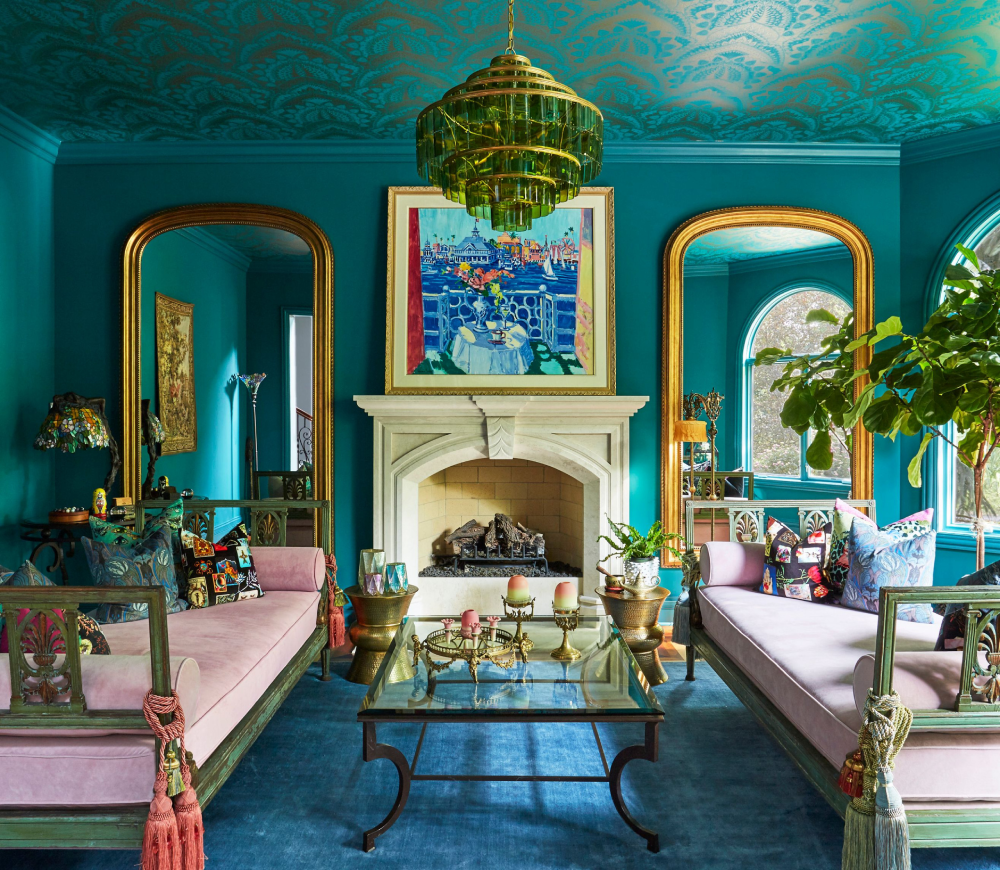 Image source: Jasmin Reese Interiors
Image source: Jasmin Reese Interiors
Gold goes well with other luxury colors, and turquoise walls certainly fit that bill. Plus, both are bright colors that you can use for an uplifting atmosphere. You can also opt for a more measured approach when filling out the space. For example, try using turquoise furniture with gold throw pillows.
On a similar note, you can implement this scheme even better in a more spacious environment. Using them in equal percentages brings elegance to the room, especially with bright turquoise.
Using Pink With a Turquoise Color
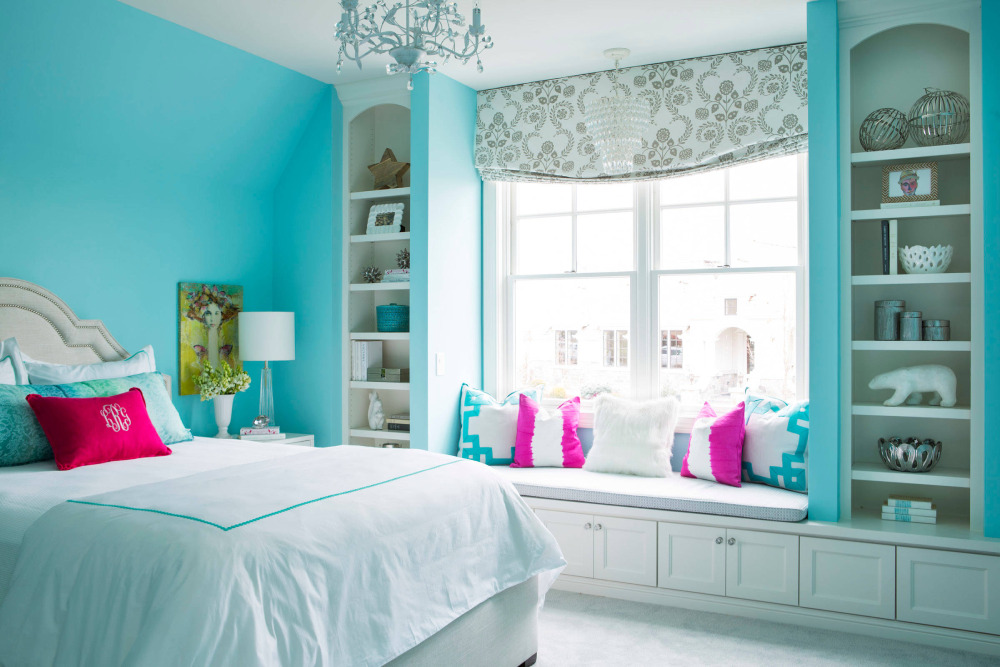 Image source: Martha O’Hara Interiors
Image source: Martha O’Hara Interiors
This is a bold color scheme that can indeed work out in the end. To prevent these hues from clashing, opt for their softer variants. If used correctly, they may end up serving as complementary colors. To that end, introduce pink with your choice of curtains or pillows.
Pairing Turquoise With the White Color
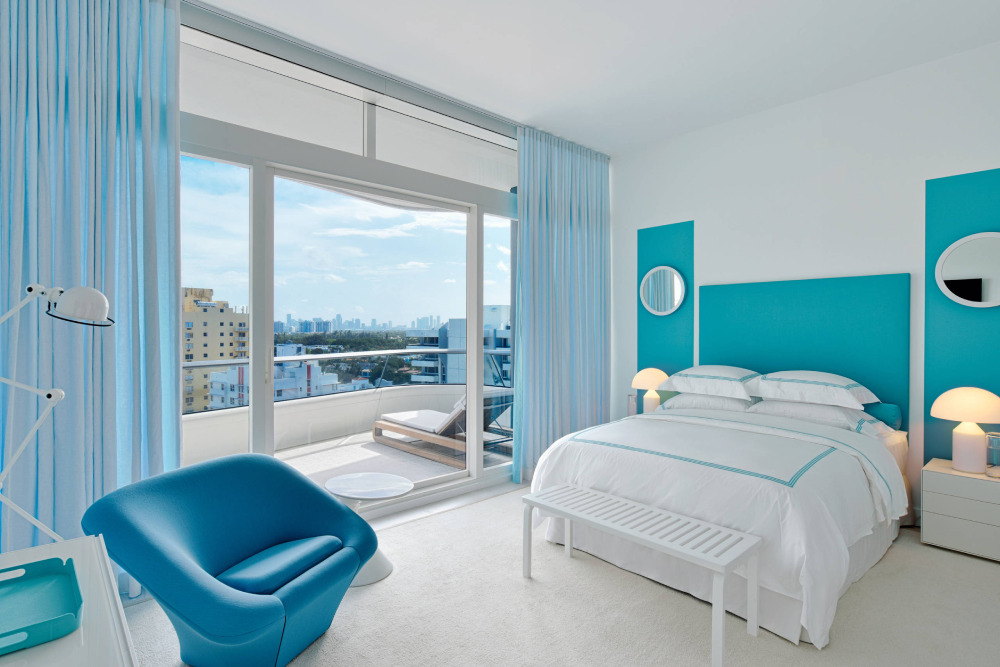 Image source: Lakeshore Construction
Image source: Lakeshore Construction
White is the most natural example of the colors that go with turquoise. Plus, using it with turquoise accents the latter’s oceanic’s vibe even more. Therefore, this combination is the best choice to make when you’re aiming for a soothing outcome.
You can also use pure white wall paint and add depth with turquoise curtains. That way, you’ll divert more eyes on them and end up with a stylish setup.
The Beige Color and Different Shades of Turquoise
 Image source: Eric Piasecki
Image source: Eric Piasecki
Several neutral shades of beige go with the color turquoise while making it the focal point. Together, these colors can brighten up the room and make it look cozy. Plus, you can opt for beige wall paint with turquoise elements or vice-versa. Either choice is fine for the vast majority of cases.
Combining Cobalt and Turquoise
 Image source: Jasmin Reese Interiors
Image source: Jasmin Reese Interiors
Cobalt is among the darker shades of the blue spectrum, bordering with the color black. As such, it is a great tool for making bold moves. Also, it is a great pair for a bright color with a turquoise accent.
On the other hand, you can shoot for a more daring and overall chic outcome with these two colors. For example, you can apply cobalt on the entire side of one wall, while using turquoise wall paint for the rest of the room. That will limit the color palette present in the room, but the setup will look flawless under light fixtures.
Adding a Yellow Tone to a Turquoise Interior
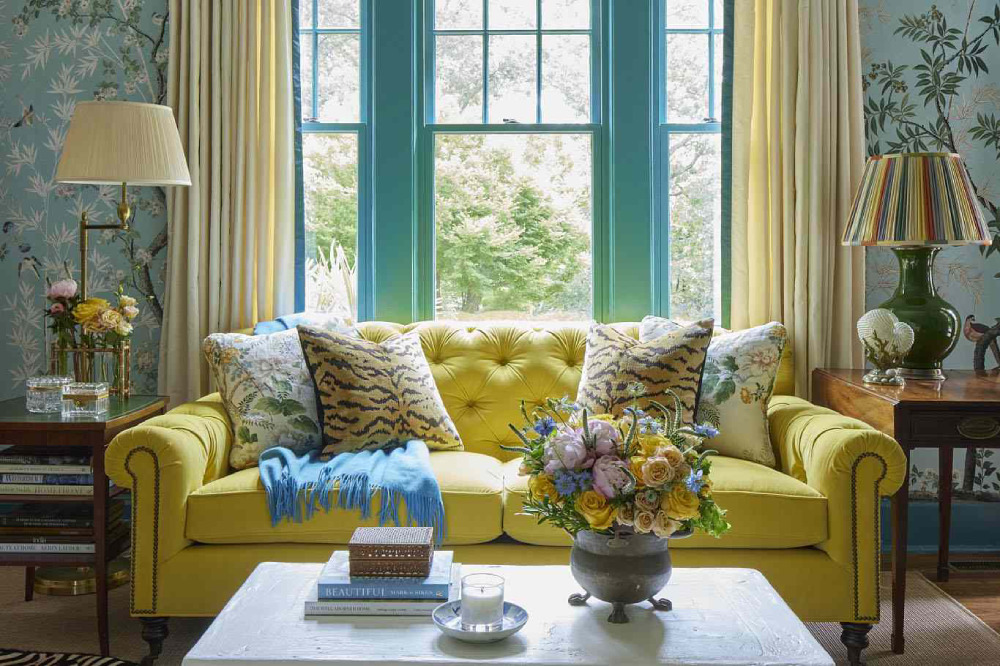 Image source: Jared Hughes
Image source: Jared Hughes
Any predominantly turquoise room is a great fit for yellow undertones. Both yellow and turquoise bring vibrancy and call for a balancing color as well. Thus, use this combination by following the 60-30-10 rule. For example, paint 60% of the space with a neutral color before adding 30% yellow. Then, finish the remaining 10% with the turquoise color.
The Cream and Turquoise Color Combination
 Image source: Joni Spear Interior Design
Image source: Joni Spear Interior Design
This is an excellent choice for an elegant and relaxing living room. The cream and turquoise colors complement each other and lead to a cheerful atmosphere. Plus, the cream always does a great job balancing vibrant colors like turquoise.
Black Color Next to Turquoise Paint Colors
 Image source: ESW Designs
Image source: ESW Designs
Black is another natural color that’s an excellent pair for turquoise. However, note that overlying on their interaction can overpower all light elements. Therefore, avoid a too-gloomy outcome by exposing the space to enough direct sunlight and installing white accents.
The Sky Blue Shade With Turquoise
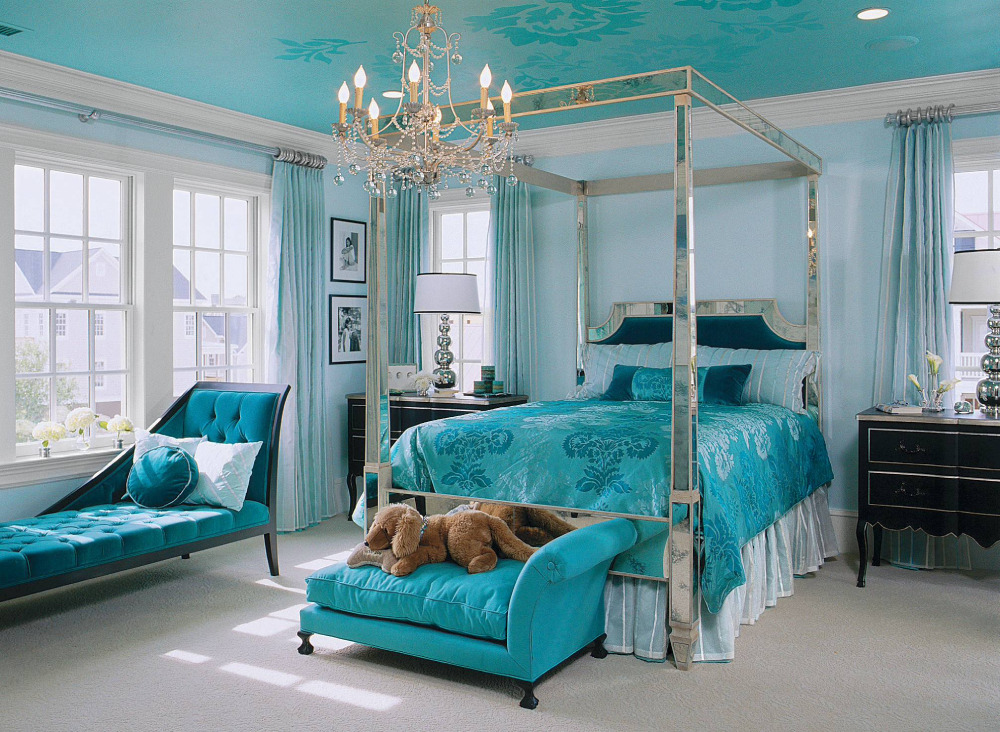 Image source: Margaret Donaldson Interiors
Image source: Margaret Donaldson Interiors
If you’re trying to create a serene and calming ambiance, try bringing sky blue and turquoise together. This approach is popular in various spa centers, but it belongs in any bathroom as well. Also, you can use it when redecorating your bedroom for the same relaxing effect.
Currently, people most often use blue sky as the color for the sink or bathtub areas. Next, they add pink or gold elements to round up the setup.
Brown and Turquoise Hues
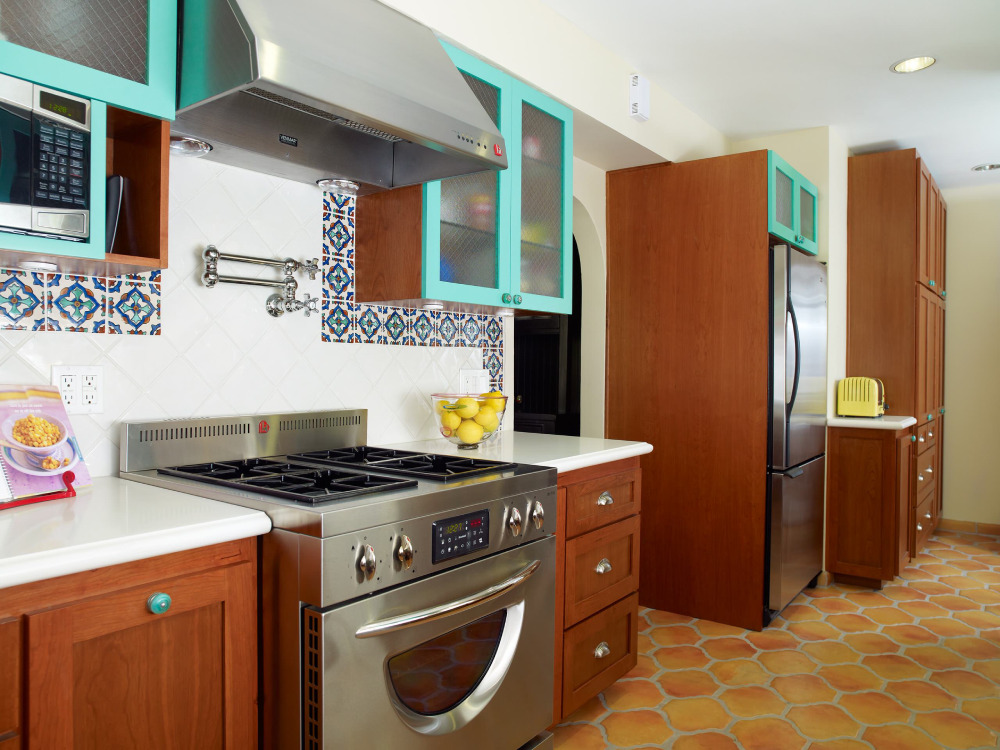 Image source: Erica Islas / EMI Interior Design, Inc.
Image source: Erica Islas / EMI Interior Design, Inc.
Brown can be a reliable background color when you’re trying to showcase a particular turquoise shade. The two contrast each other nicely, and you can find various combinations between them. For instance, a brown sofa in front of a turquoise wall.
Combining Gray and Turquoise
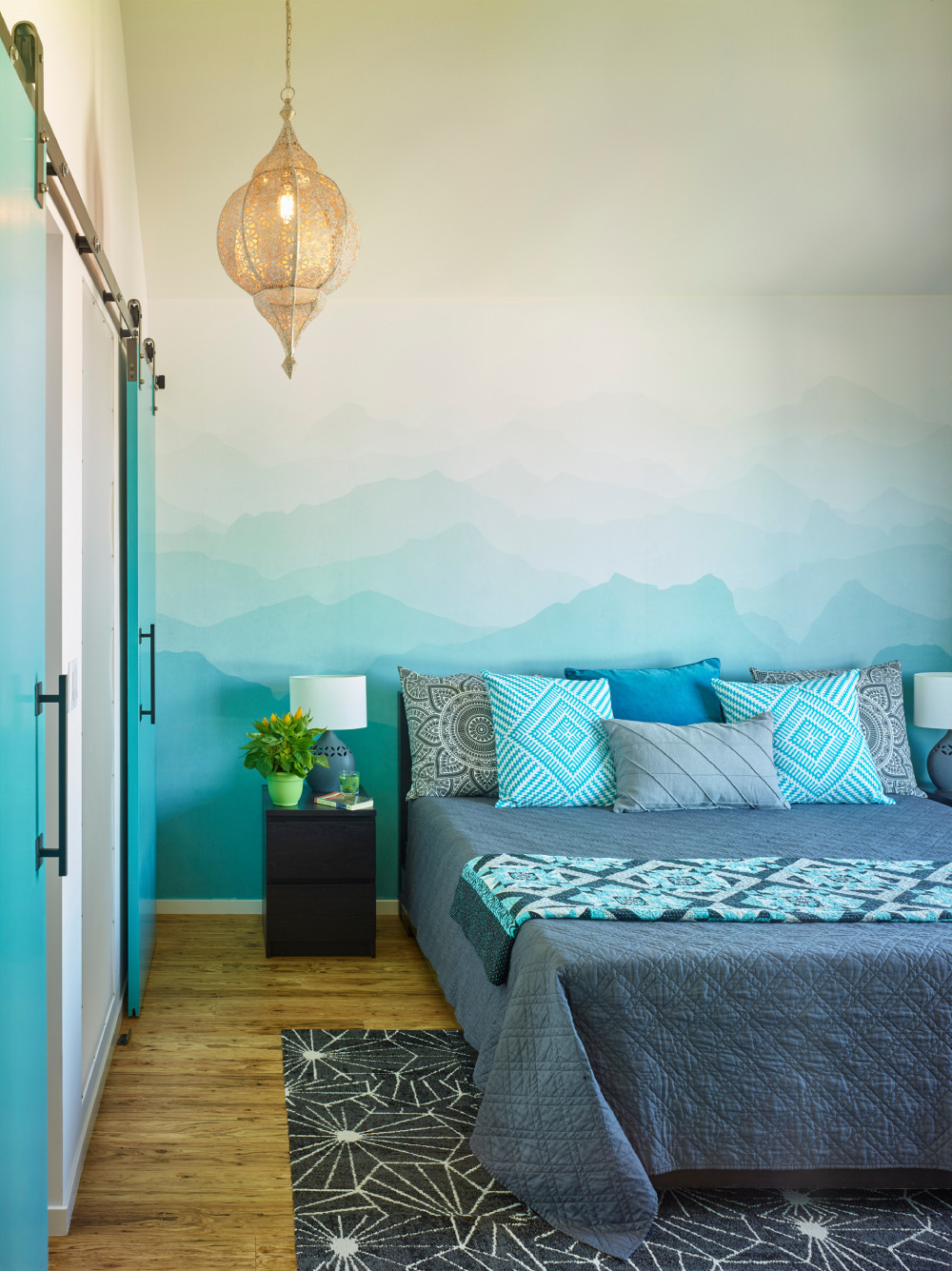 Image source: Jennifer Ott Design
Image source: Jennifer Ott Design
To create an aesthetically pleasing scenery, include equal measures of gray and turquoise. Gray is a reliable neutral color that can accentuate the freshness of the turquoise shade. Next, consider adding some cream or white accents to upkeep that balance.
Copper With a Turquoise Wall
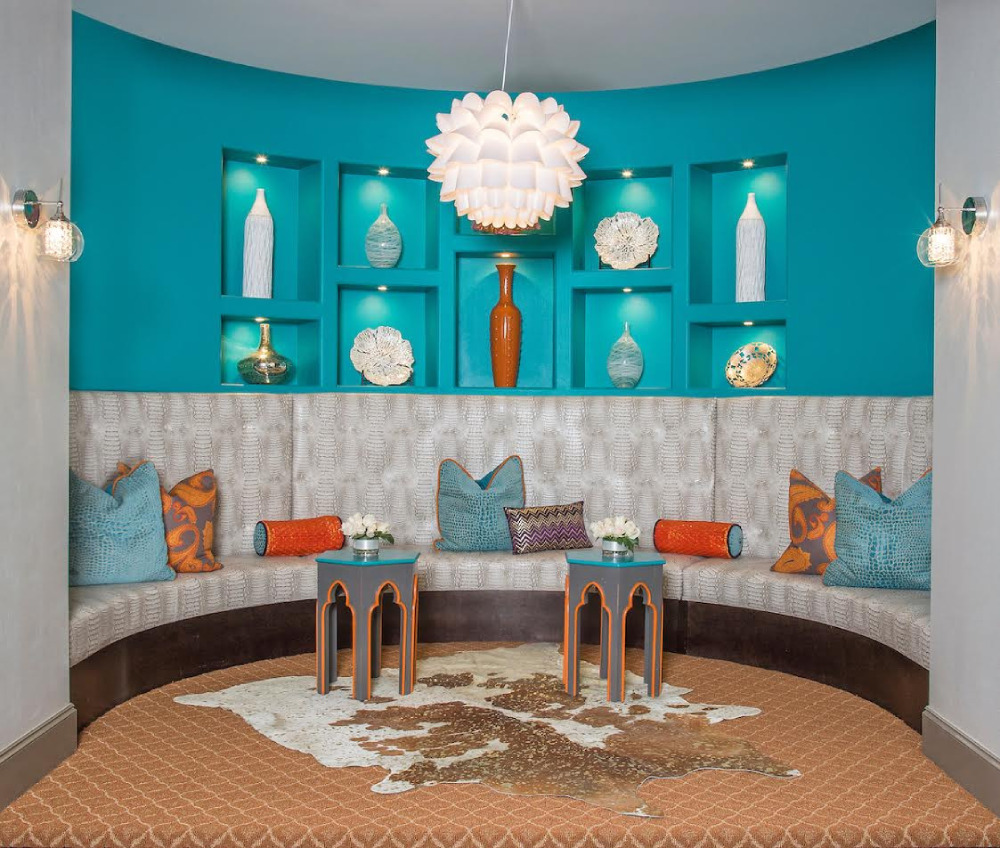 Image source: Whiteline Designs
Image source: Whiteline Designs
This is a natural pairing that works in a variety of setups. Copper and turquoise is a popular scheme that adds high class wherever applied. For the best outcome, introduce copper by adding such lamps and other hanging accessories.
The Light Purple With Turquoise Setup
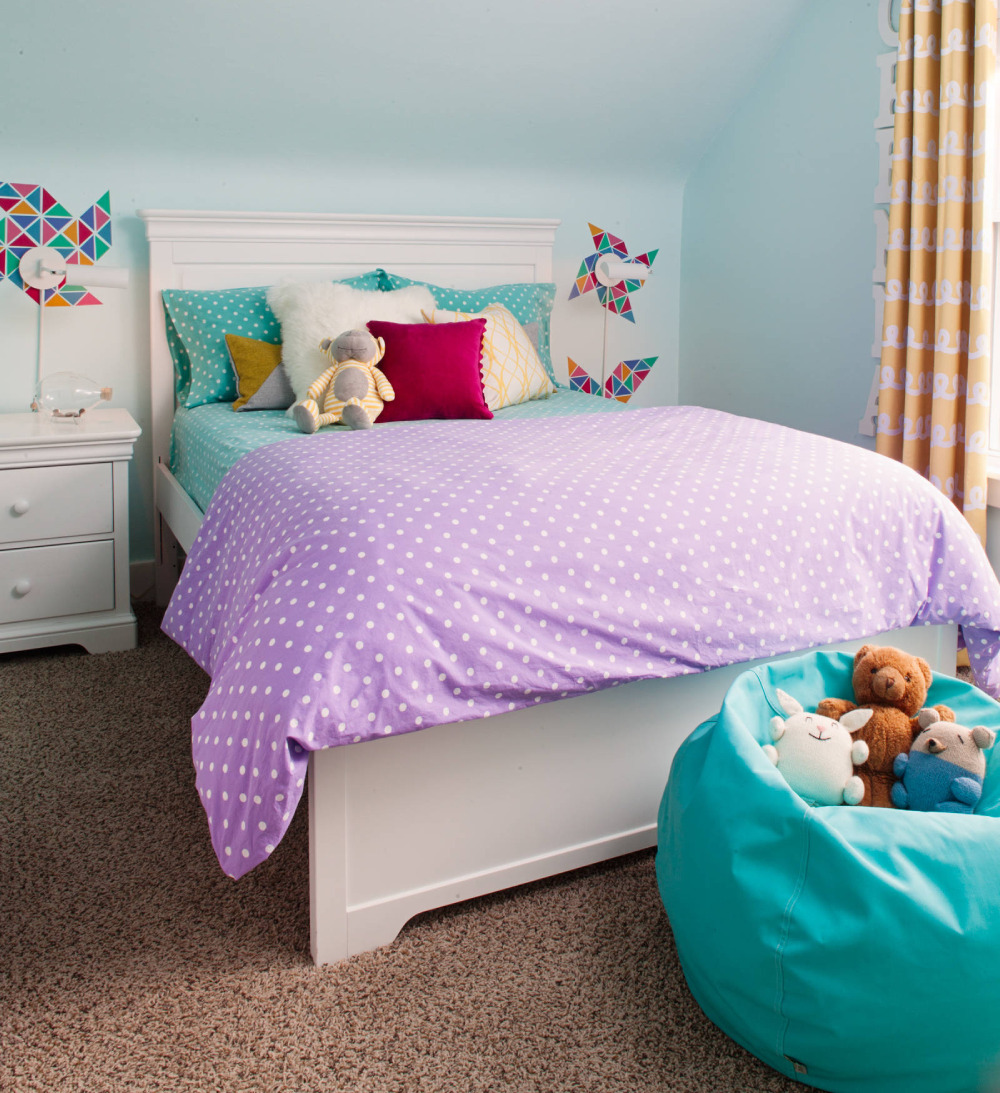 Image source: Niche Interiors
Image source: Niche Interiors
Turquoise and a light purple variant like lilac are a great match for a kid’s bedroom. They interact in a playful manner and look excessively vibrant. Hence, save this combination for your spa, bathroom, or nursery rooms.
The Green-Turquoise Mixture
 Image source: BarlisWedlick Architects
Image source: BarlisWedlick Architects
These are analogous colors for which you’ll have an extremely easy time pairing. They blend together fast and carry a natural theme at the same time. One popular way to bring them together is by opting for darker turquoise wall paint. Then, implement sage green as the main color of your furniture.
Using Orange and Turquoise at the Same Time
 Image source: Lee Meier Interiors
Image source: Lee Meier Interiors
Orange is a bold, vibrant color that isn’t an obvious choice among the colors that go with turquoise. However, this combination can work if you plan their respective measures beforehand. As a rule of thumb, it’s best to apply small doses of orange to break up long stretches of turquoise. Otherwise, the overall setup may get far too saturated.
Such a method will bring the artistic values of turquoise to the forefront. So, using orange as the accent color is a tasteful solution that won’t ruin your primary idea. Instead, it’s an excellent way to add a creative note to your living room layout.
The Red Color With Turquoise
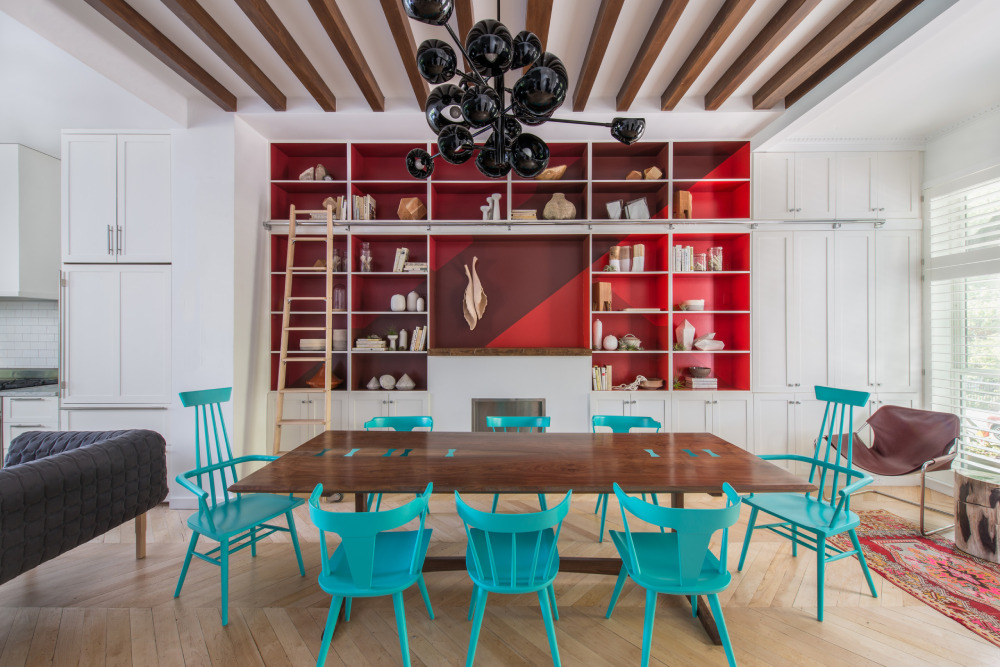 Image source: Jessica Helgerson Interior Design
Image source: Jessica Helgerson Interior Design
Red and turquoise are a strong combo that matches each other’s intensity levels. You can pair them easily, though remain attentive to whether they do pop up as intended. As for the chosen method, you can use both of them as wall paint or in the furniture.
When doing so, ensure to break them apart just enough so they don’t cross over to too much chic. In other words, it’s best to use soft white or cream elements in between red and turquoise.
FAQ On Colors That Go With Turquoise
What colors complement turquoise in a living space?
Rich chocolate browns can ground the vibrancy of turquoise, offering a visual embrace that warms up the space. Similarly, warm neutrals serve as a subtle backdrop, letting turquoise shine while ensuring the atmosphere remains cozy and inviting.
Can turquoise work in a monochromatic color scheme?
Absolutely, turquoise can be the star of a monochromatic scheme when tempered with its subtler shades. Imagine a gradient from the softest sky blue to the deepest ocean teal—such a palette creates a serene and cohesive look that’s both ethereal and anchored.
How do I balance turquoise in a vibrant room?
Pair turquoise with its complementary colors like coral or tangerine to spark joy in your room. The key is moderation; use these energetic hues in accents, ensuring they converse harmoniously rather than compete.
What colors should I avoid pairing with turquoise?
Steer clear of colors that clash in tone and temperature. Overly bright neons or muddied browns can disharmonize the clean, spirited nature of turquoise. Remember, you’re orchestrating a visual symphony, not a cacophony.
Is turquoise a good choice for creating a tranquil bedroom?
In the realm of color psychology, turquoise is a calming force, reminiscent of tranquil seas and clear skies. Pair with soft greys or creamy whites for a bedroom that serves as a tranquil retreat from the world’s hustle.
What colors can I pair with turquoise for a modern kitchen look?
Sleek, metallic finishes like stainless steel or brushed nickel stand alongside turquoise in contemporary splendor. Add crisp whites to the mix, and your kitchen becomes a modern haven with a pop of color that elevates the culinary space.
How do I use turquoise in a child’s room without it feeling overwhelming?
Anchor turquoise with pastel colors—think a blush pink or a gentle lavender. They soften turquoise’s intensity, creating a playful yet restful atmosphere for a child’s sanctuary.
Can turquoise be used in seasonal decor effectively?
Turquoise transcends seasons with ease. In summer, it’s the touch of coolness we crave. For autumn and winter, blend it with rich oranges or deep reds for warmth. Come spring, pair it with fresh greens for a burst of new life.
What is the best way to incorporate turquoise into my wardrobe?
Turquoise becomes a standout accessory against a monochrome ensemble. Think of a turquoise scarf or statement jewelry that breathes life into a simple outfit. In attire, it pairs well with neutrals or, for the bold, with a color wheel complementary yellow for contrast.
How does turquoise influence the mood of a work environment?
Turquoise in a work setting can stimulate a clear mind and calm demeanor—ideal for meeting rooms or personal workspaces.
Its presence is like a visual sigh of relief, encouraging productivity while combating stress. Pair with color wheel analogous soft greens or blues for an even more focused atmosphere.
Conclusion
We’ve traversed a chromatic journey, exploring the lush landscape where colors that go with turquoise flourish. From the grounding embrace of earth tones to the dynamic sparkle of metallic accents, this versatile hue offers a spectrum of possibilities.
- Discover serenity with palettes that mirror the natural world, coupling turquoise with soft sands and whispering greys.
- Invite energy by injecting vibrant corals or sun-kissed yellows that dance alongside turquoise in spirited harmony.
In crafting spaces that resonate, colors are not mere backdrops; they are the very essence of expression. The alchemy of color theory and visual color balance we’ve distilled here serves to elevate turquoise from a mere accent to the protagonist of your decor narrative.
As you stand at the cusp of creation, armed with the wisdom of complementary colors and the nuances of color psychology, may your endeavors bloom in a haven that celebrates turquoise in all its chromatic splendor—where every choice is not just seen but felt.

